Results 10,051 to 10,060 of 12094
Thread: Anandtech News
-
11-14-19, 09:26 PM #10051
Anandtech: NVIDIA Announces Q3 FY 2020 Earnings
Today NVIDIA announced their results for the third quarter of their 2020 fiscal year, and the company’s results took a hit compared to their Q3 2019 results with earnings of $3.014 billion this quarter, down 5% year-over-year. Gross margin was up though to a very healthy 63.6%, up 3.2% from a year ago. Operating income was down 12% to $927 million, with net income down 27% to $899 million. Earnings-per-share fell to $1.45, down 26% from $1.97 a year ago.
NVIDIA breaks its business into two high-level categories, with GPU and Tegra. GPU revenue was down 8% to $2.565 million, while Tegra was up 10% to $449 million.NVIDIA Q3 2020 Financial Results (GAAP) Q3'2020 Q2'2020 Q3'2019 Q/Q Y/Y Revenue $3014M $2579M $3181M +17% -5% Gross Margin 63.6% 59.8% 60.4% +3.8% +3.2% Operating Income $927M $571M $1058M +62% -12% Net Income $899M $552M $1230M +63% -27% EPS $1.45 $0.90 $1.97 +61% -26%
Breaking these down into markets, NVIDIA’s Gaming revenue was down 6% to $1.659 billion, with NVIDIA attributing this to a decline in desktop GPU sales. A year ago, NVIDIA launched their Turing platform, meaning they are now a year into their latest platform, with sales not quite as high as when it launched. However, the desktop GPU sales drop was partially offset by increased notebook GPUs as well as gaming platform SoCs.
Professional Visualization set a record for revenue, up 6% from a year ago and coming in at $324 million. NVIDIA has stated that they’ve had strong sales in mobile workstation products.
Data Center revenue was down 8% to $726 million. NVIDIA has seen lower enterprise revenue, and sales of products with lower margins than some of their top-tier datacenter products, but this drop was partially offset by increased hyperscale demand.
Automotive revenue was down 6% to $162 million, with lower sales of autonomous vehicle solutions and legacy infotainment modules being singled out, but growth in AI cockpit solutions helped stem the decline.
Finally, OEM and Other revenue was $143 million, down 3% from a year ago.
NVIDIA has been riding a large wave of success over the last several years, and the company has diversified itself significantly, but the last couple of quarters have seen the company fall back to earth somewhat. But with strong margins, they are investing heavily in R&D, with $53 million more spent in this quarter than a year ago, and for first nine months of their 2020 fiscal year, they’ve spent and additional $163 million so far, bringing the total for 2020 to $400 million.NVIDIA Quarterly Revenue Comparison (GAAP)
($ in millions)In millions Q3'2020 Q2'2020 Q3'2019 Q/Q Y/Y Gaming $1659 $1313 $1764 +26% -6% Professional Visualization $324 $291 $305 +11% +6% Datacenter $726 $655 $792 +11% -8% Automotive $162 $209 $172 -22% -6% OEM & IP $143 $111 $148 +29% -3%
Looking ahead to Q4, NVIDIA is expecting revenue of $2.95 billion, plus or minus 2% with a gross margin of 64.1%, plus or minus 0.5%.
Source: NVIDIA Investor Relations
More...
-
11-15-19, 11:06 AM #10052
Anandtech: The Dell XPS 13 7390 2-in-1 Review: The Ice Lake Cometh
It’s difficult to understate how important the XPS 13 is to Dell’s lineup, and to the industry as a whole. This is the device that reshaped the entire market with the advent of the InfinityEdge display back in 2015 which transformed the laptop landscape in an instant, rendering all other devices as dull and out of date. But other manufacturers are relentless, and Dell’s early design lead was never going to last forever. Other laptops have arguably caught, and even surpassed the XPS 13 over the last couple of generations. But Dell’s latest model of their flagship 13-inch laptop hopes to take the reins back.
More...
-
11-15-19, 02:47 PM #10053
Anandtech: Kioxia Expands Automotive Grade eUFS Lineup: 512 GB for Extreme Conditions
Kioxia (formerly Toshiba Memory), has expanded its lineup of embedded USF (eUSF) storage with a 512 GB device based on the company’s BiCS 3D NAND flash. The chip is rated to support a very wide range of operating temperatures along with special features that increase its reliability and endurance.
Kioxia’s eUFS 512 GB drive for automotive applications uses the company’s specially developed controller as well as BiCS 3D TLC NAND flash memory. The chips are compliant with the UFS 2.1 HS-G3 specification and can use two full-duplex HS-Gear3 lanes with a 5.8 GT/s data transfer rate per lane, which means a hypothetical maximum bandwidth of 1200 MB/s (assuming that pSLC caching and other performance-boosting methods are used, of course). Other members of the automotive eUFS 2.1 family include drives featuring capacities between 16 GB and 256 GB.
Since Kioxia’s automotive grade eUFS storage devices will work in rough environments, they are AEC-Q100 Grade 2 qualified and can operate in extreme temperatures between -40ºC and 105ºC for prolonged amounts of time. In addition, controllers of these drives support functions like Refresh, Thermal Control, and Extended Diagnosis that are designed to improve overall reliability and endurance.
Kioxia has started sampling of its automotive grade eUFS 2.1 512 GB drives with customers. Commercial shipments of such storage devices will begin no earlier than in 2020.
Related Reading:
- 512 GB of UFS 3.0 Storage: Western Digital iNAND MC EU511
- Samsung Begins Mass Production of 256 GB eUFS Devices for Automotive Applications
- Toshiba Begins to Sample UFS 3.0 Drives: 96L 3D TLC NAND, Up to 2.9 GB/s
- Toshiba Samples eUFS Devices for Vehicles: Extended Temps & Reliability Features
Source: Kioxia
More...
-
11-15-19, 02:47 PM #10054
Anandtech: ASUS: Intel CPU Shortages Easing, But Future Is Uncertain
During its earnings call with analysts and investors, ASUS commented that while the tight supply of Intel’s processors persisted, it is no longer as severe as it was in late 2018. The company said that based on claims of the chipmaker, it did not expect CPU shortages in Q1 2020, but the situation with Q2 2020 remained unclear. Meanwhile, to lessen the impact of insufficient supply from Intel, ASUS now offers more AMD-based products.
Intel has increased its 14 nm production capacity in terms of wafer starts per month (WSPM) by 25% in 2019 as compared to 2018, yet the company admits that its backlogged status will persist in the fourth quarter of this year, so not all of its partners will get all the chips they want. The world’s largest supplier of processors continues to give priority to production of server and higher-end client processors, so the situation with supply of entry-level products continues to be uncertain. Since ASUS is focused primarily on premium products, it was not affected by shortages of Intel’s inexpensive processors as severely as its peers who have more numerous inexpensive offerings in their lineups, though there was still some negative impact on the company.
Here is what S.Y. Hsu, co-CEO of ASUS, had to say.
“The Intel CPU shortage began in Q4 of last year and continued into Q1 of this year. In Q2 and Q3 of this year the situation is easing and the messaging from our partner tells us that in Q4, we still face some shortage. This is not something that is unique to ASUS, but affects the entire PC industry. As for 202… Currently, the information transparency lets… allows us to know that in Q1 we will have some – we will not have CPU shortage. However, there is not enough transparency for Q2 because this is a situation that has continued from Q4 of last year.”Considering that sales of PCs are usually slow in the first quarter and Intel’s fabs are running at full steam at the moment (keep in mind that production cycle of modern CPUs is long), it is likely that supply-demand balance will be more or less met in Q1. Meanwhile, demand for computers in Q2 and onwards is something that is harder to predict.
In a bid to lower the impact of Intel CPU shortages, ASUS and other makers of PCs and components have developed more AMD-based products. In the desktop space, where AMD is very competitive and is gaining market share, this approach has clearly worked. In the laptop space, on the other hand, the lion’s share of ASUS notebooks is based on Intel processors. Meanwhile, notebooks in general commanded 71% of ASUS’ revenue in Q3 2019.
To lessen the impact of Intel CPU shortage, this year ASUS introduced several AMD-powered notebooks and began to promote them among retailers and end users, which is why they are now better received by the market than before, according to the company.
Related Reading:
- Intel Boosts 14nm Capacity 25% in 2019, But Shortages Will Persist in Q4
- Intel Supply in Q4: “Output Capacity up, Supply-Demand Still High”
- Intel: CPU Shortages Will Persist Throughout Q3 2019
- ASUS Comments on Intel Shortages, U.S.-China Trade War
- Intel Further Boosts CapEx to Meet Demand for 14nm Chips
- Intel Investing $1B to Meet 14nm Demand: Prioritizing High-End Core and Xeon
Source: ASUS
More...
-
11-15-19, 07:01 PM #10055
Anandtech: 28-Inches of TUF Gaming: The ASUS VG289Q 4K IPS Monitor w/ DCI-P3 & FreeSy
ASUS has introduced a new TUF-series monitor, which is designed for mainstream gamers who need a quality monior with support for major features, but are not necessarily interested in extreme performance. The TUF Gaming VG289Q combines all the main selling points of modern gaming displays: a large screen size with a 4K resolution, AMD’s FreeSync variable refresh rate, and DCI-P3 as well as HDR support.
Based on a non-glare 28-inch IPS panel, the ASUS TUF Gaming VG289Q has a 3840×2160 resolution, 350 nits peak luminance, a 1000:1 contrast ratio, 178°/178° viewing angles, a 5 ms GtG response time, and a 60 Hz refresh rate. Overall then, ASUS seems to be covering their bases by building a modest monitor around a solid 28-inch panel, but not chasing high-end features like high refresh rates that quickly drive up the price of a monitor.
Meanwhile, the TUF Gaming VG289Q monitor can display 1.07 billion colors and covers 90% of the DCI-P3 color gamut, something that will please multimedia enthusiasts. The LCD also technically supports HDR modes — the ASUS Multi HDR (for games and movies) mode as well as the HDR10 mode — although its peak brightness is too low for HDR, so the actual HDR user experience is something that remains to be seen.
Because the TUF VG289Q is designed for gamers, it inherits pre-set display modes for gaming, including genre-specific Gamevisual presets, Gameplus overlays (crosshair, time, FPS counter), and Shadow Boost feature that makes darker areas lighter without overexposing bright areas within a scene.
As far as connectivity is concerned, the ASUS TUF VG289Q has one DisplayPort 1.2, two HDMI 2.0 ports, and a headphone jack, an essential set of connectors to plug-in a PC and a couple of game consoles. Meanwhile, the monitor comes with a stand that can adjust height, swivel, tilt, and orientation.
ASUS has not announced pricing of its TUF Gaming VG289Q display, but considering positioning of the TUF brand and characteristics of the LCD, the product should be priced reasonably for a 28-incher. As for its launch date, the monitor should become available in the near future.
Related Reading:ASUS TUF Gaming VG289Q General Specifications Panel 28" IPS with non-glare coating Native Resolution 3840 × 2160 Maximum Refresh Rate 60 Hz Dynamic Refresh Rate AMD FreeSync (40 Hz ~ 60 Hz?) Response Time 5 ms (gray-to-gray) Brightness 350 cd/m² Contrast 1000:1 Viewing Angles 178°/178° horizontal/vertical Color Gamut 90% DCI-P3 Pixel Pitch 0.1614×0.1614 mm PPI 157 PPI Inputs 1 × DisplayPort 1.2
2 × HDMI 2.0Audio 3.5-mm headphone jack Color Black Power Consumption Standby 0.5 W Maximum 65 W Additional Information Link Price ?
- AOC Introduces Its G2868PQU Monitor: An Inexpensive 4K Gaming Display with FreeSync
- LG Launches 32QK500-W QHD Display: IPS and Freesync for $300
- LG Unveils 32UK550: 31.5 Inch 4K Display with DCI-P3, HDR10, & FreeSync for $500
- ASUS Displays New TUF Gaming Products
- CES 2019 Quick Byte: Ryzen 7 3750H inside the ASUS FX505DY TUF Gaming with 120 Hz Freesync
Source: ASUS (Hermitage Akihabara)
More...
-
11-17-19, 05:19 PM #10056
Anandtech: Raja Koduri at Intel HPC Devcon Keynote Live Blog (4pm MT, 11pm UTC)
Prior to the annual Supercomputing conference, Intel hosts its HPC Developer Conference a couple of days before. This year's HPC Devcon keynote talk is from Intel SVP, Chief Architect and General Manager of Architecture, Raja Koduri, with promises to cover Intel's efforts as it relates to Graphics and Software in HPC. We're here with the live blog of Raja's presentation. It starts at 4pm Mountain Time (11pm UTC), so come back then to follow along.
More...
-
11-17-19, 08:03 PM #10057
Anandtech: Intel’s 2021 Exascale Vision in Aurora: Two Sapphire Rapids CPUs with Six
For the last few of years, when discussing high performance computing, it has been tough to avoid hearing the word ‘exascale’. Even last month, on 10/18, HPC twitter was awash with mentions of ‘Exascale Day’, signifying 10^18 operations per second (that’s 10 million million million). The ‘Drive to Exascale’ is one of the key features of the current high-computing market, and Intel is going in with the new Supercomputer ordered by the Argonne National Laboratory.
More...
-
11-17-19, 08:03 PM #10058
Anandtech: Intel’s Xe for HPC: Ponte Vecchio with Chiplets, EMIB, and Foveros on 7nm,
Today is Intel’s pre-SC19 HPC Devcon event, and with Raja Koduri on stage, the company has given a small glimpse into its high-performance compute accelerator strategy for 2021. Intel disclosed that its new hardware has the codename ‘Ponte Vecchio’ and will be built on a 7nm process, as well as some other small interesting bits.
More...
-
11-18-19, 12:17 PM #10059
Anandtech: Philips Launches Momentum 392M7C: An Entry-Level Curved 38.5-Inch Gaming M
Philips has quietly unveiled its new Momentum 392M7C curved monitor, which is aimed at gamers who are after an entry-level large screen display with high refresh rates and variable refresh support. The huge display with a 3000R curvature promises to provide a cinema-like immersion, though its Full-HD resolution and a relatively low pixel density will have an impact on the experience.
Under the hood, the Philips Momentum 392M7C is built from a 38.5-inch VA with a 1920x1080 resolution. The display features a maximum brightness of 250 nits, a 5000:1 contrast ratio, a 3000R curvature, a 1 ms MPRT response time, and a 144 Hz maximum refresh rate with VESA’s Adaptive-Sync variable refresh rate technology on top (e.g. FreeSync). The monitor can display 16.7 million colors and covers 105.48% of the sRGB and 94.11% of the NTSC color gamuts, which is in line with other inexpensive mainstream LCDs.
Besides its size and a high refresh rate, the main peculiarity of the Momentum 392M7C is its Full-HD resolution and a pixel density of 57 PPI, the latter of which is quite low by today’s standards. For gaming and video playback, pixel density is not often crucial – especially when many video sources are 1080p – but for typical productivity applications a 38.5-inch Full-HD screen with a 57 PPI pixel density does not seem like an optimal combination. Meanwhile, the LCD supports Philips’ SmartImage presets for various game genres (FPS, RTS, Racing, custom) to provide optimal experience.
As for connectivity, the Momentum 392M7C has one DisplayPort input, two HDMI inputs, and one D-Sub input to maintain compatibility both with new and legacy PCs. Furthermore, the monitor has a headphone output. As for the stand, only the tilt is adjustable, which is typical for large entry-level monitors.
The Philips Momentum 392M7C is set to hit the market shortly. Though as we sometimes see with other entry-level monitors, it probably won't be available worldwide.Philips Momentum 392M7C General Specifications Panel 38.5" VA with non-glare coating Native Resolution 1920 × 1080 Maximum Refresh Rate 144 Hz Dynamic Refresh Rate VESA Adaptive-Sync Response Time 1 ms MPRT Brightness 250 cd/m² Contrast 5000:1 Curvature 3000R Viewing Angles 178°/178° horizontal/vertical Color Gamut 105.48% sRGB
94.11 NTSCPixel Pitch 0.445×0.445 mm PPI 57 PPI Inputs 1 × DisplayPort
1 × D-Sub
2 × HDMIAudio 3.5-mm headphone jack Stand Tilt: -5°/10° Power Consumption Standby 0.5 W Maximum 46.4 W Additional Information Link Price ?
Related Reading:
- Philips Reveals 346B1C 34-Inch 100 Hz Curved UltraWide Monitor with USB-C Docking
- Dell’s UltraSharp U3818DW Now Available: Curved 37.5”, 3840×1600, USB-C, $1499
- Nixeus Launches NX-EDG34: A Curved 34-Inch WQHD Monitor w/ 144 Hz & FreeSync
- AOC’s CQ32G1 Curved Monitor: 31.5 Inch, 144 Hz, FreeSync, Sub $400
- AOC Launches CQ27G1 Curved Monitor: 27 Inch, 144 Hz, FreeSync, Sub-$300
Source: Philips (via TFTCentral)
More...
-
11-18-19, 12:17 PM #10060
Anandtech: MSI Unveils Cubi 5 10M Palm-Sized PC: Comet Lake with 64 GB of RAM & Wi-Fi
MSI has introduced one of the industry’s first ultra-compact desktops powered by Intel’s 10th Generation ‘Comet Lake-U’ processors, the Cubi 5 10M. With Comet Lake-U available in up to 6 core configurations and supporting up to 64 GB of memory, the Cubi 5 10M is powerful enough that it can be used for a wide variety of applications, including productivity, photo editing, design, and multimedia playback.
Measuring 124×124×53.7 mm and weighing 550 grams, MSI’s Cubi 5 10M compact PCs are quite literally palm-sized. Under the hood, they pack one of Intel’s 10th Generation Core i3/i5/i7 processors with two, four, or six cores as well as Intel's UHD 630 Graphics. The CPU is cooled down using an active cooling system, so the processors should be able to turbo fairly often. The SoC is accompanied by two SO-DIMM memory slots supporting up to 64 GB of DDR4-2666 memory, an M.2 slot for an SSD, and a 2.5-inch bay for additional storage.
On the wireless connectivity side of matters, MSI’s Cubi 5 10M UCFF systems come with either Intel’s Wireless AC 9462 or Wireless AX201 adapters with Bluetooth 5. As for wired connectivity, the mini-PC offers GbE (Intel WGI219V), three USB 3.2 Gen 1 Type-A connectors, one USB 3.2 Gen 1 Type-C port, two USB 2.0 headers, two display outputs (DisplayPort 1.2, HDMI 1.4), a headphone output, a microphone in, and a power connector. The Cubi comes with a 65 W external power brick, and it can be further equipped with an external power switch to turn it on or off when it is located in a hard to reach area.
Overall, the Cubi 5 10M SFF PC is fairly typical for a small form factor PC design, incorporating Intel's latop-focused hardware to instead build a small and low power desktop. With Comet Lake-U reaching 6 cores, the system should be able up to the task for most office-grade, non-graphics-heavy workloads, as well as making for a modest HTPC.
MSI is already listing its Cubi 5 10M ultra-compact desktop on its website, so expect it to hit the market shortly. They've yet to disclose the pricing, however, so we'll have to see where that ends up.
- Intel’s ‘Frost Canyon’ NUC Revealed: SFF PC w/ Comet Lake
- Intel's Bean Canyon (NUC8i7BEH) Coffee Lake NUC Review - Ticking the Right Boxes
- Intel’s Islay Canyon Mini NUCs Available: Whiskey Lake, Radeon 540X, 8GB LPDDR3
- MSI Launches Fanless Cubi 3 SFF PCs with Kaby Lake-U
- MSI Rolls-Out CUBI 2 Plus SFF PCs Featuring Intel’s Mini-STX Platform
Source: MSI (via Liliputing)
More...
Thread Information
Users Browsing this Thread
There are currently 17 users browsing this thread. (0 members and 17 guests)






 Quote
Quote
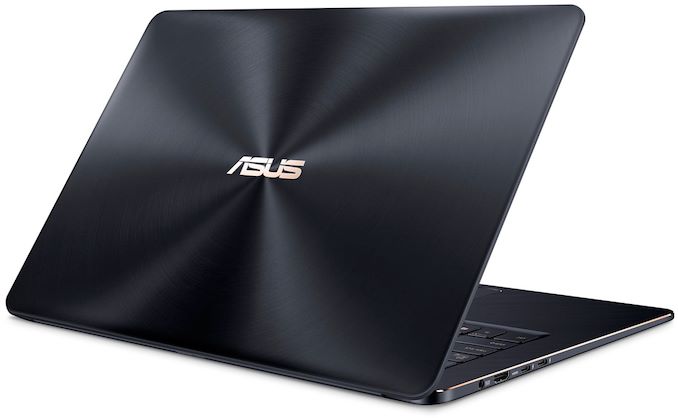
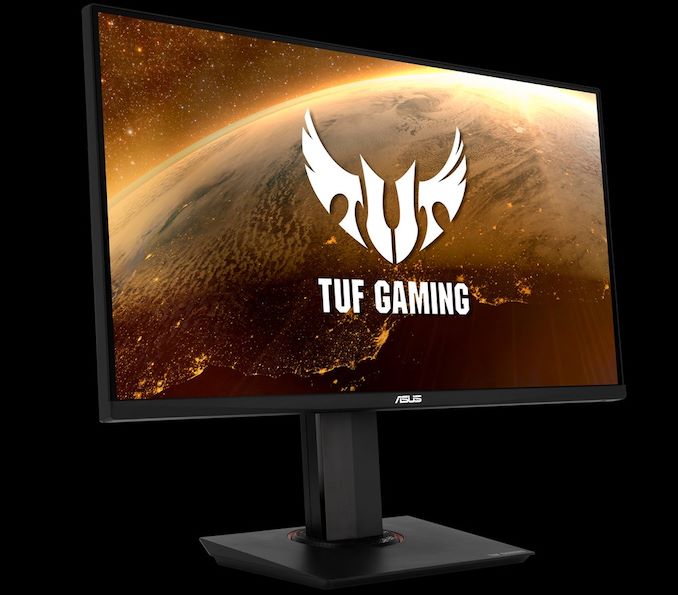


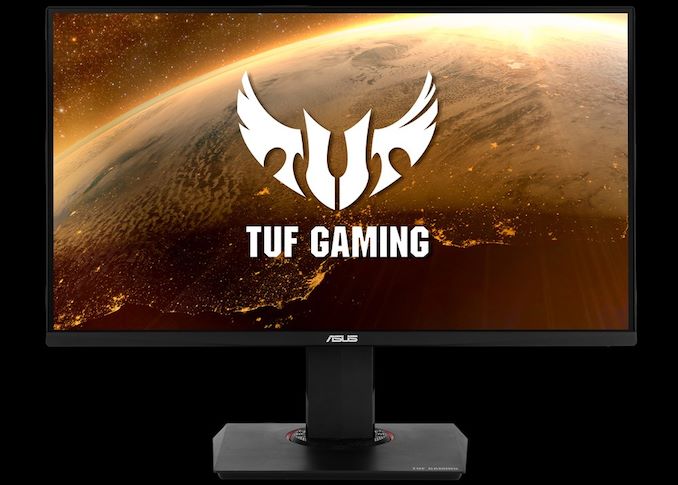
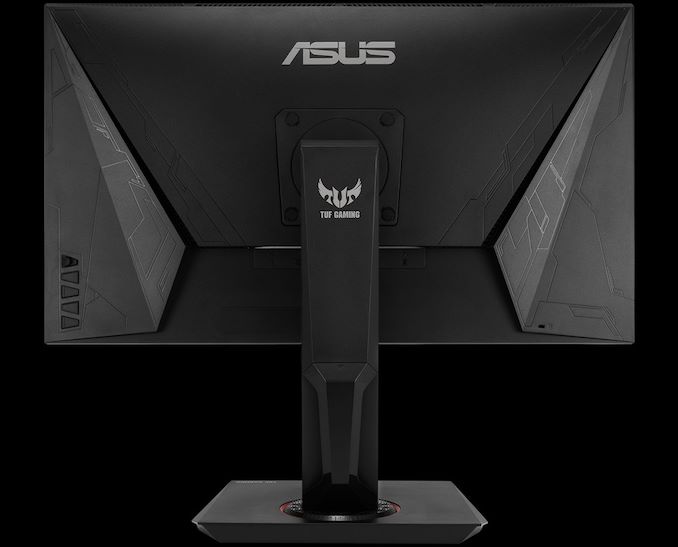
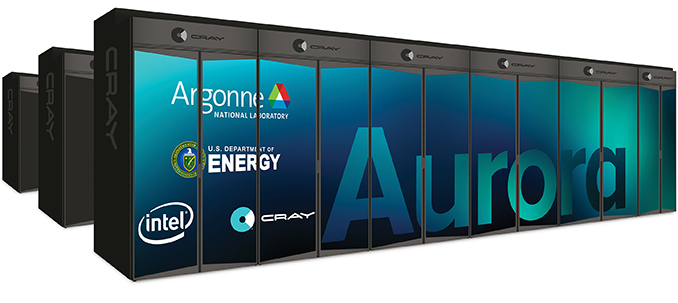
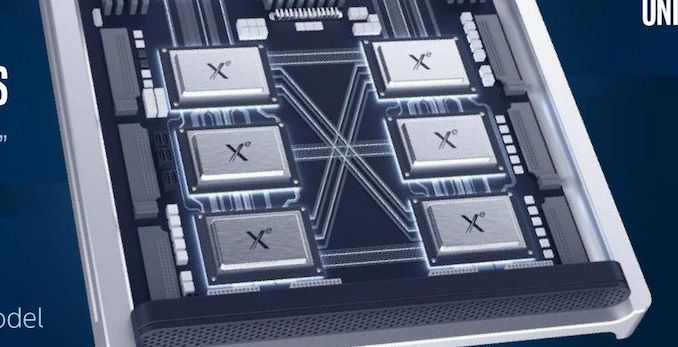
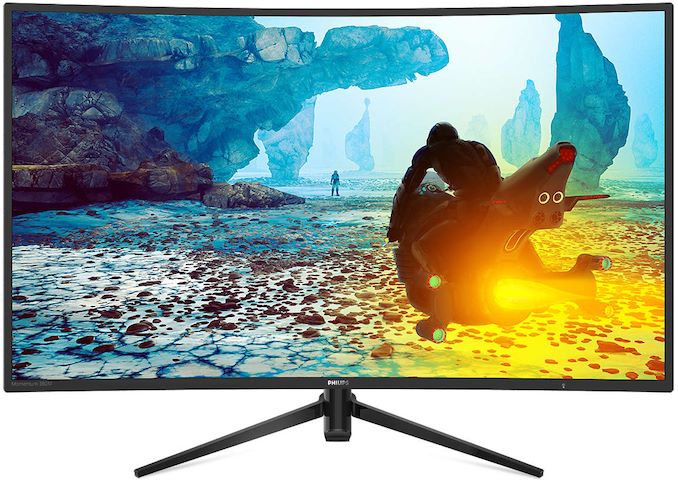





















Bookmarks